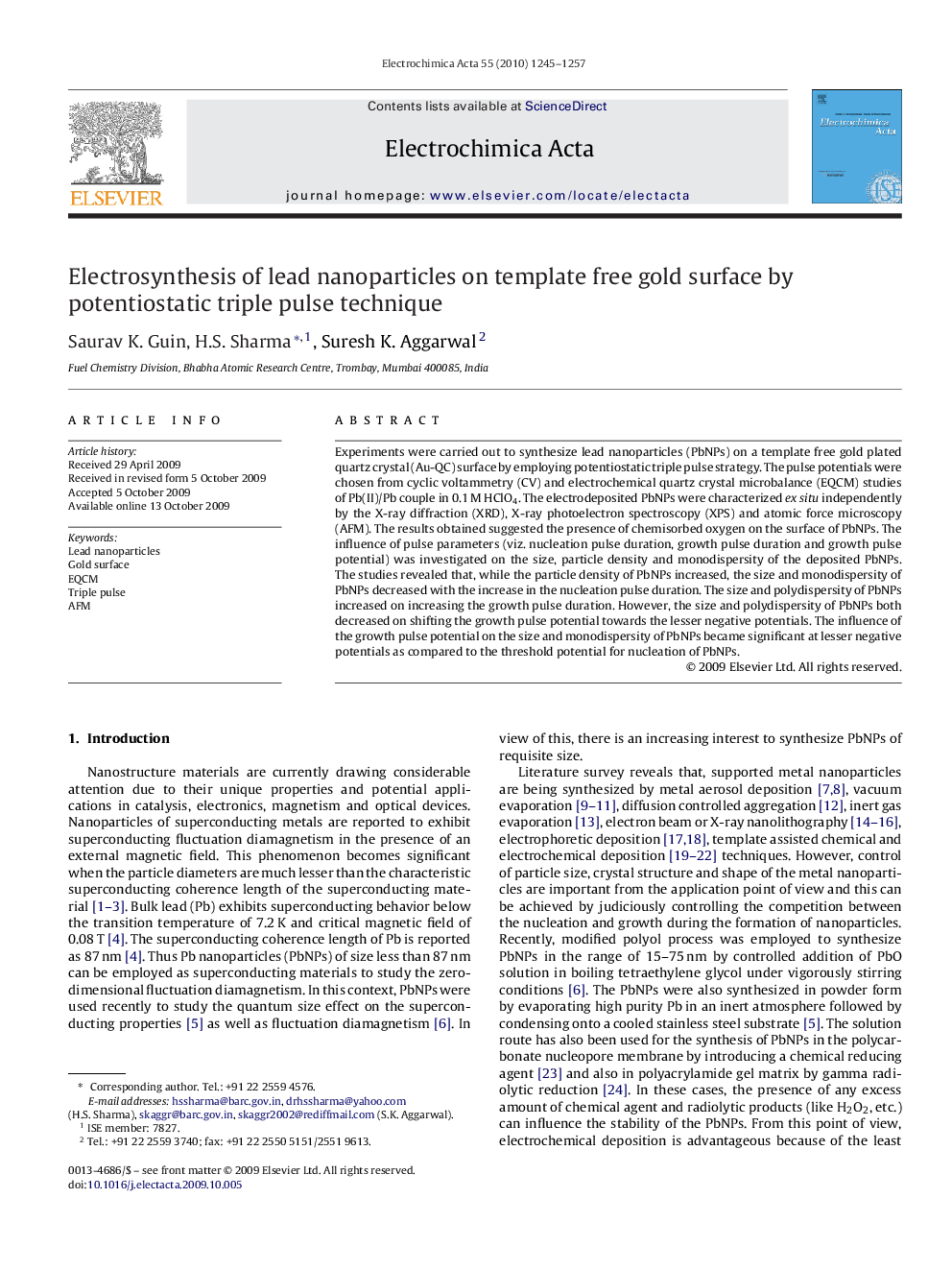| Article ID | Journal | Published Year | Pages | File Type |
|---|---|---|---|---|
| 191267 | Electrochimica Acta | 2010 | 13 Pages |
Experiments were carried out to synthesize lead nanoparticles (PbNPs) on a template free gold plated quartz crystal (Au-QC) surface by employing potentiostatic triple pulse strategy. The pulse potentials were chosen from cyclic voltammetry (CV) and electrochemical quartz crystal microbalance (EQCM) studies of Pb(II)/Pb couple in 0.1 M HClO4. The electrodeposited PbNPs were characterized ex situ independently by the X-ray diffraction (XRD), X-ray photoelectron spectroscopy (XPS) and atomic force microscopy (AFM). The results obtained suggested the presence of chemisorbed oxygen on the surface of PbNPs. The influence of pulse parameters (viz. nucleation pulse duration, growth pulse duration and growth pulse potential) was investigated on the size, particle density and monodispersity of the deposited PbNPs. The studies revealed that, while the particle density of PbNPs increased, the size and monodispersity of PbNPs decreased with the increase in the nucleation pulse duration. The size and polydispersity of PbNPs increased on increasing the growth pulse duration. However, the size and polydispersity of PbNPs both decreased on shifting the growth pulse potential towards the lesser negative potentials. The influence of the growth pulse potential on the size and monodispersity of PbNPs became significant at lesser negative potentials as compared to the threshold potential for nucleation of PbNPs.
